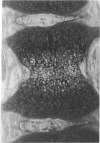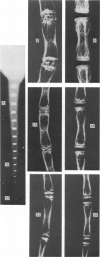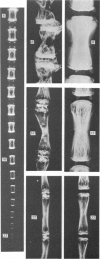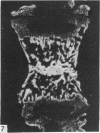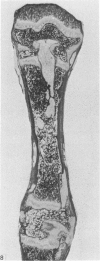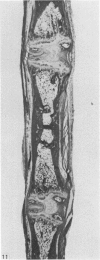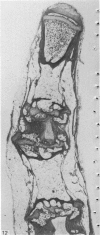Abstract
Changes in the rate of growth, shape and structure of the 8th, 16th and 22nd caudal vertebrae of 4 and 24-27 days old Sprague-Dawley rats were studied in situ and in three different non-functional transplantation sites for 12 weeks. With increasing size, maturity and age the three vertebrae showed progressively decreasing growth, changes in shape and structural abnormalities. The smallest anlages grew faster and matured sooner than normal, so that their length equalled that of controls. Central endochondral necrosis in older bones was associated with decreased longitudinal growth but in some younger ones, despite a perforation of the cartilage and herniation of the nucleus pulposus into the marrow cavity of the shaft, growth proceeded at near normal rates. The free ends of older, larger transplants grew faster than the abutting ends joined by joint connective tissue, indicating that central necrosis of cartilage resulted from impaired nutrient diffusion. The results suggest that the cartilage model may possess an inherent capacity to produce a certain limited amount of bone tissue which may be distributed either in the form of long and thin or short and inwaisted bones, depending on the balance of forces between interstitial cartilage expansion and the restraining ensheathing periosteal-perichondrial tissues. This basic form may be modified further by functional forces.
Full text
PDF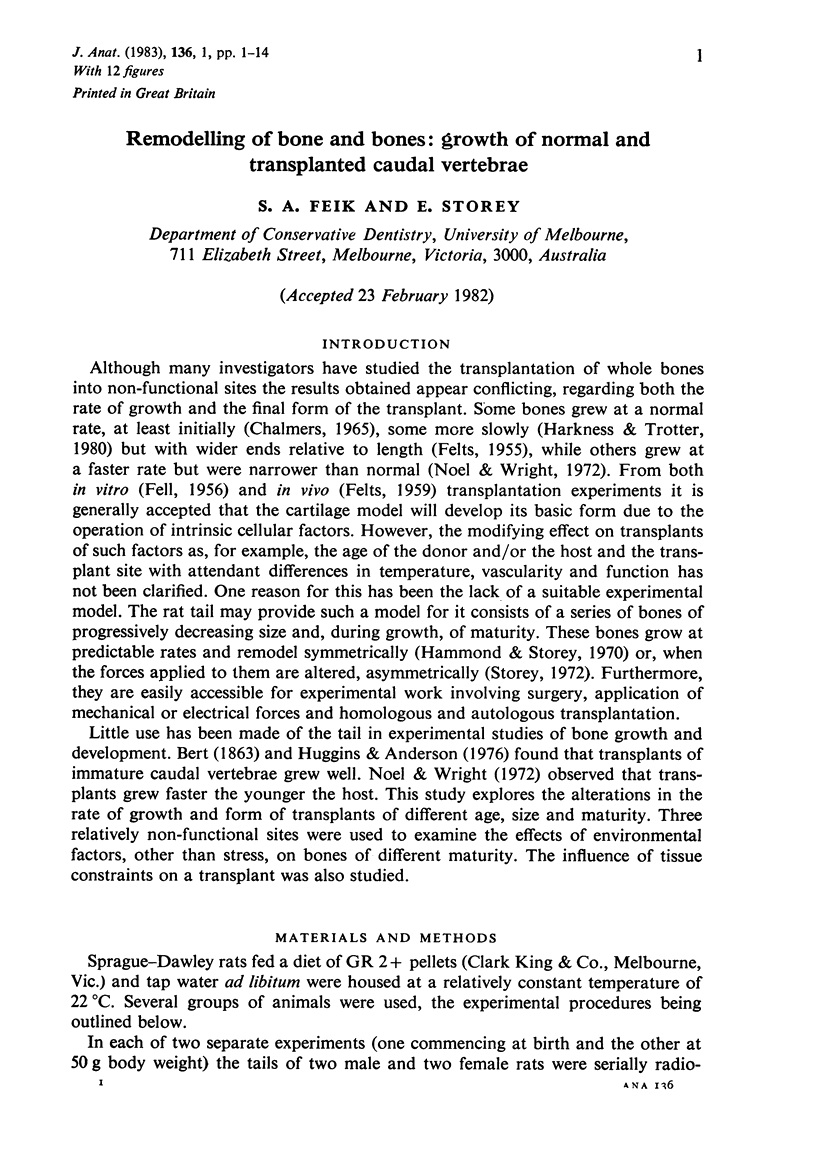
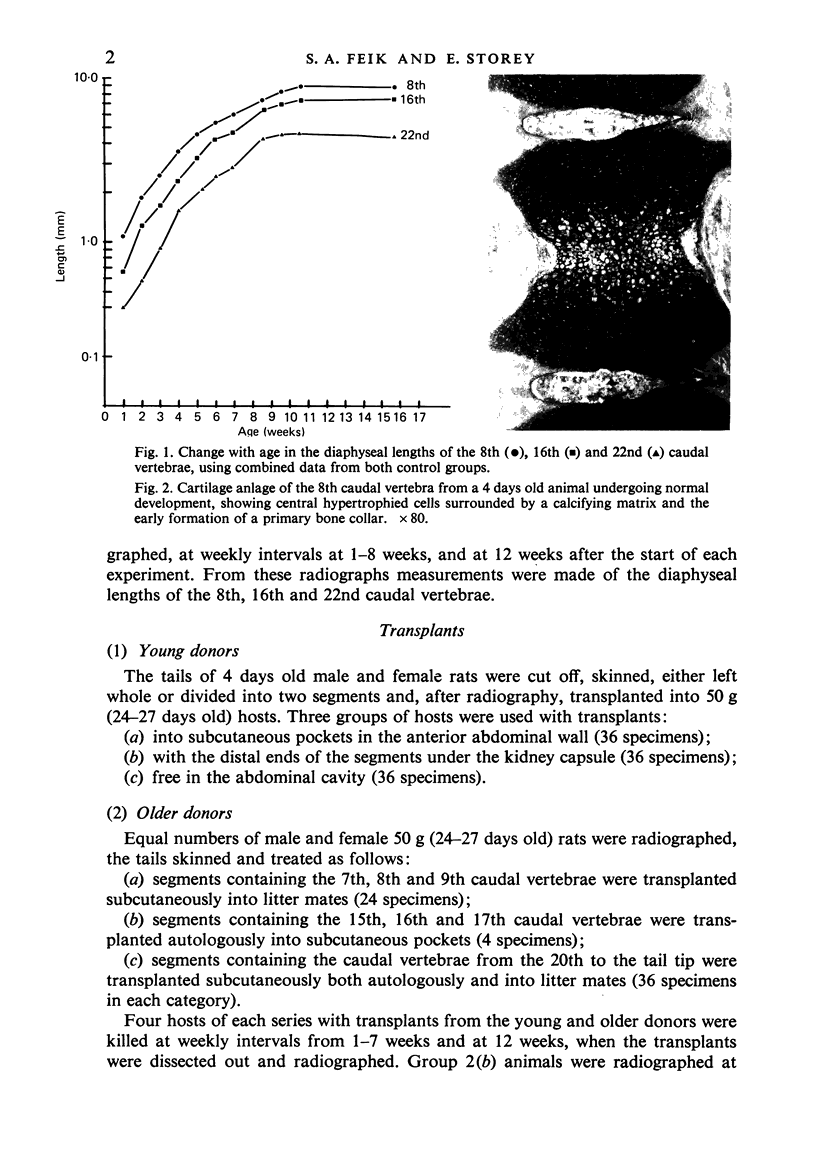
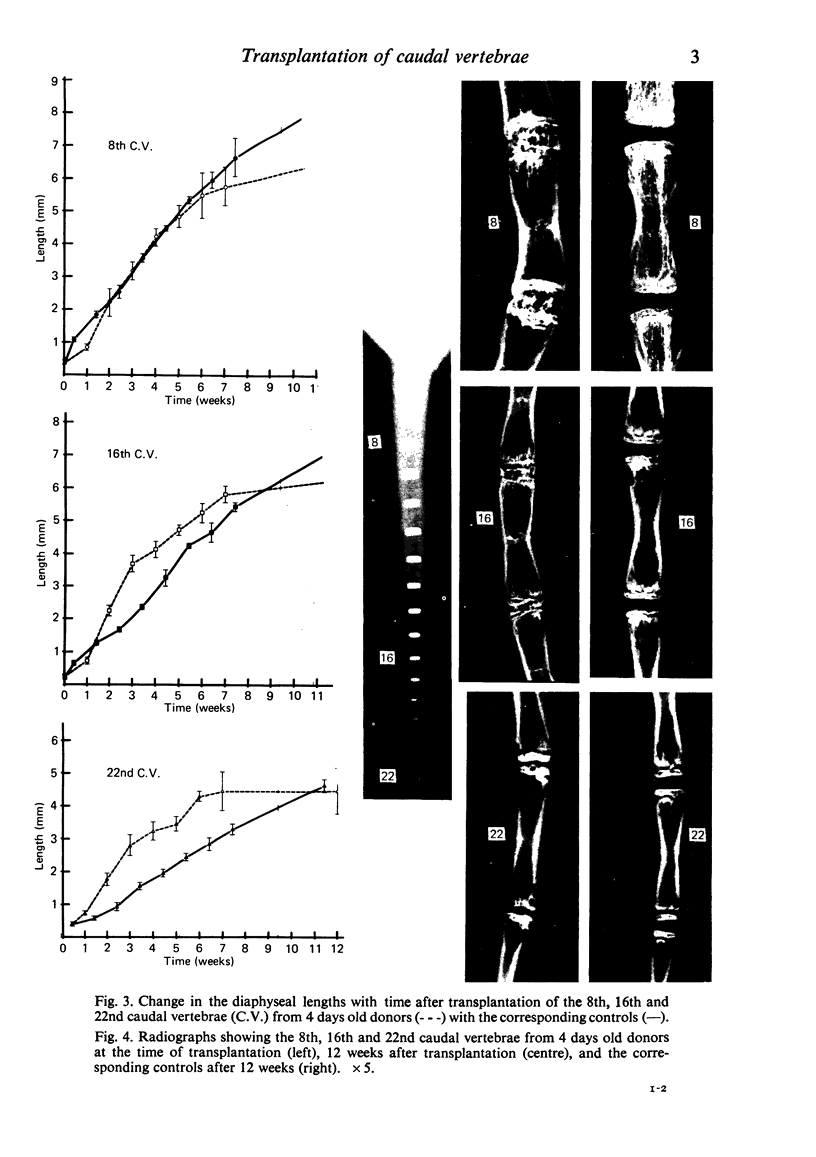
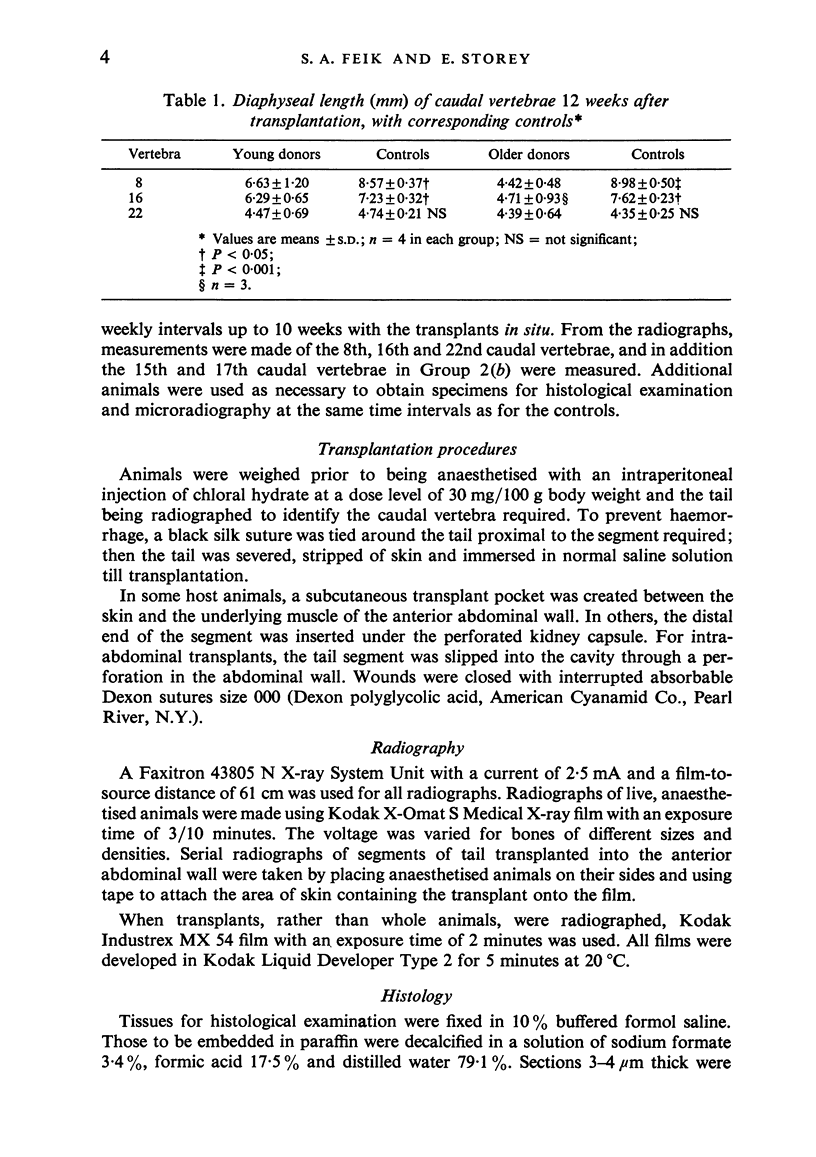
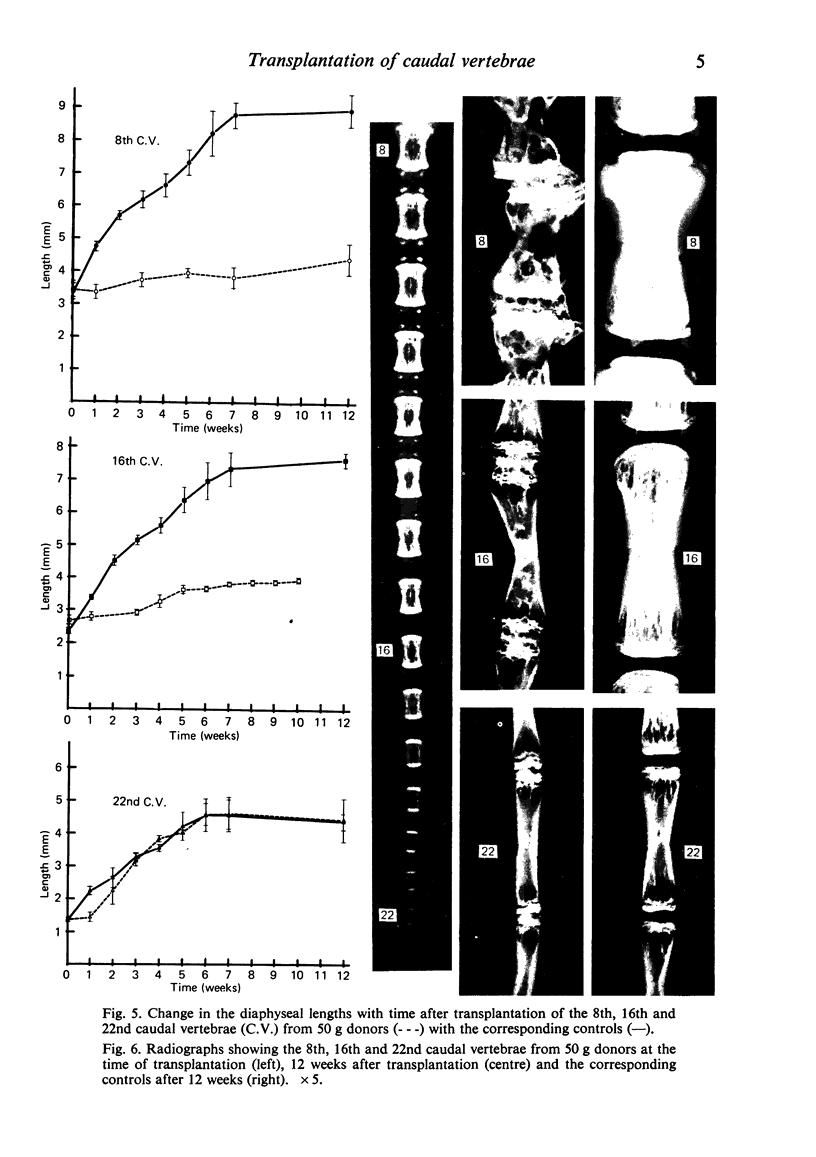
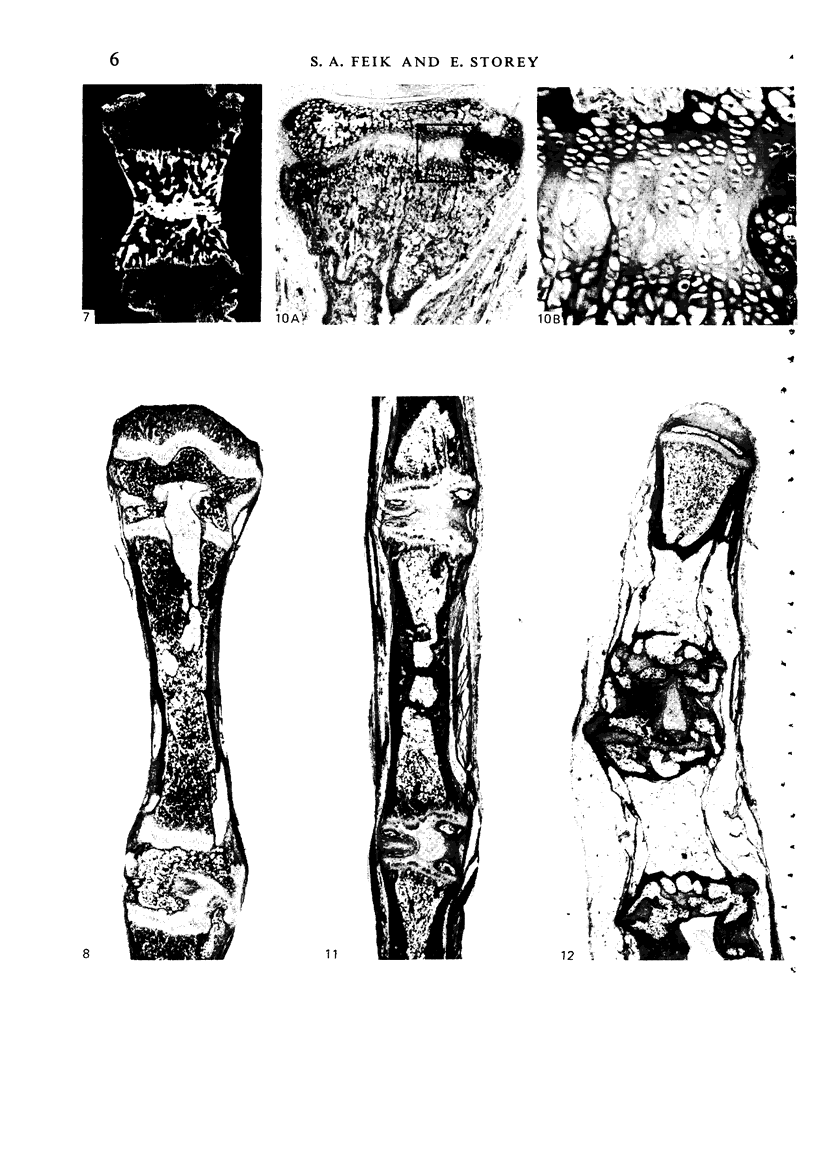
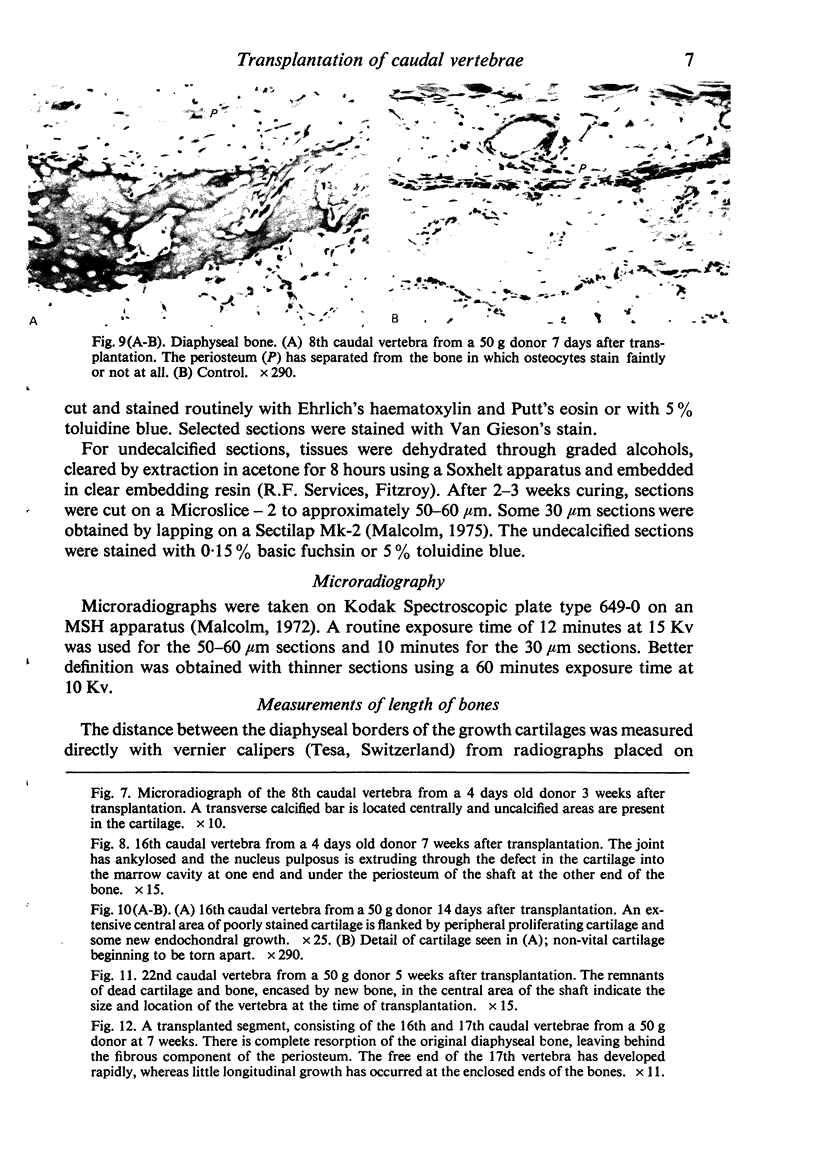
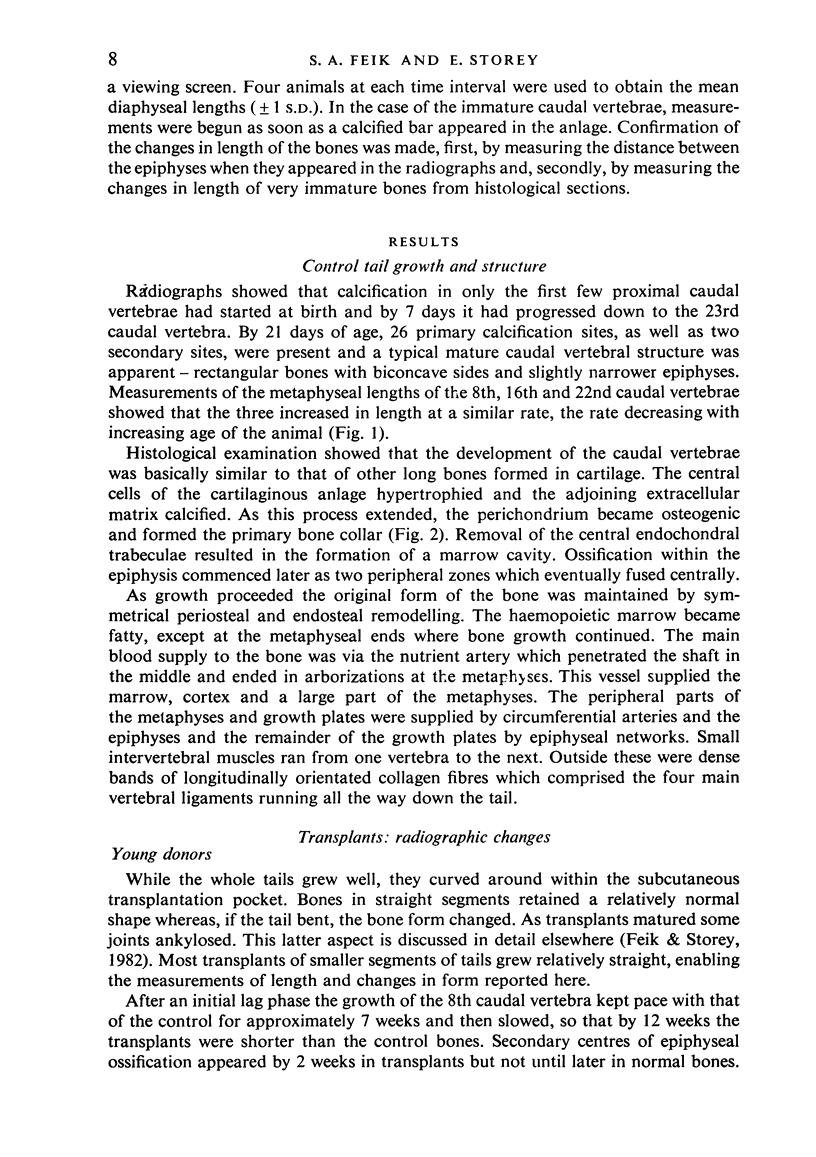
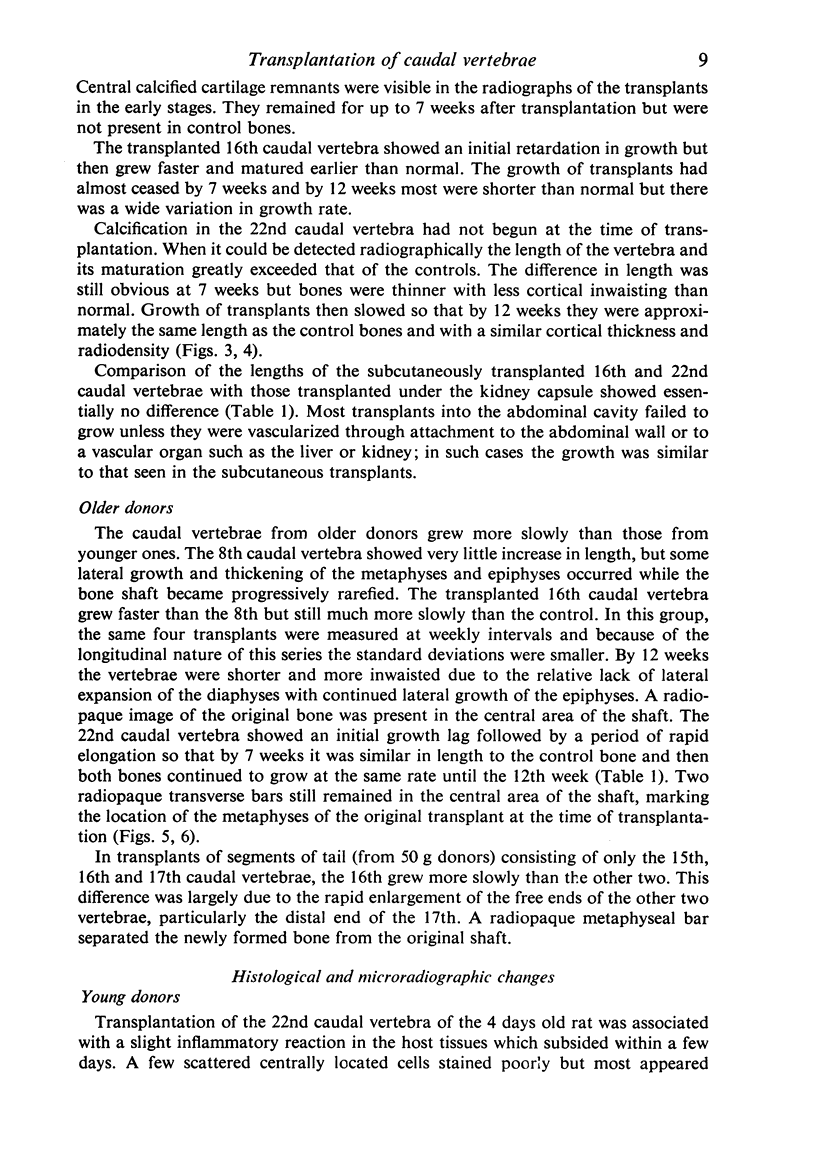
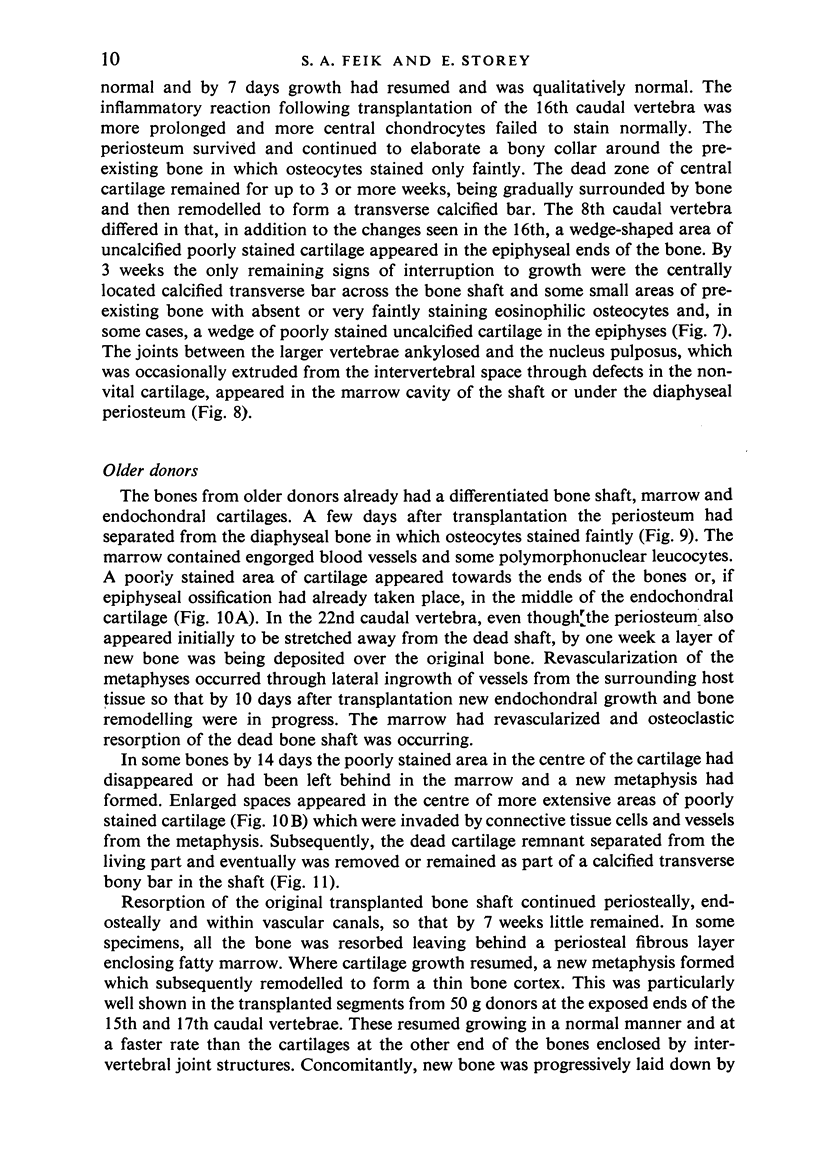
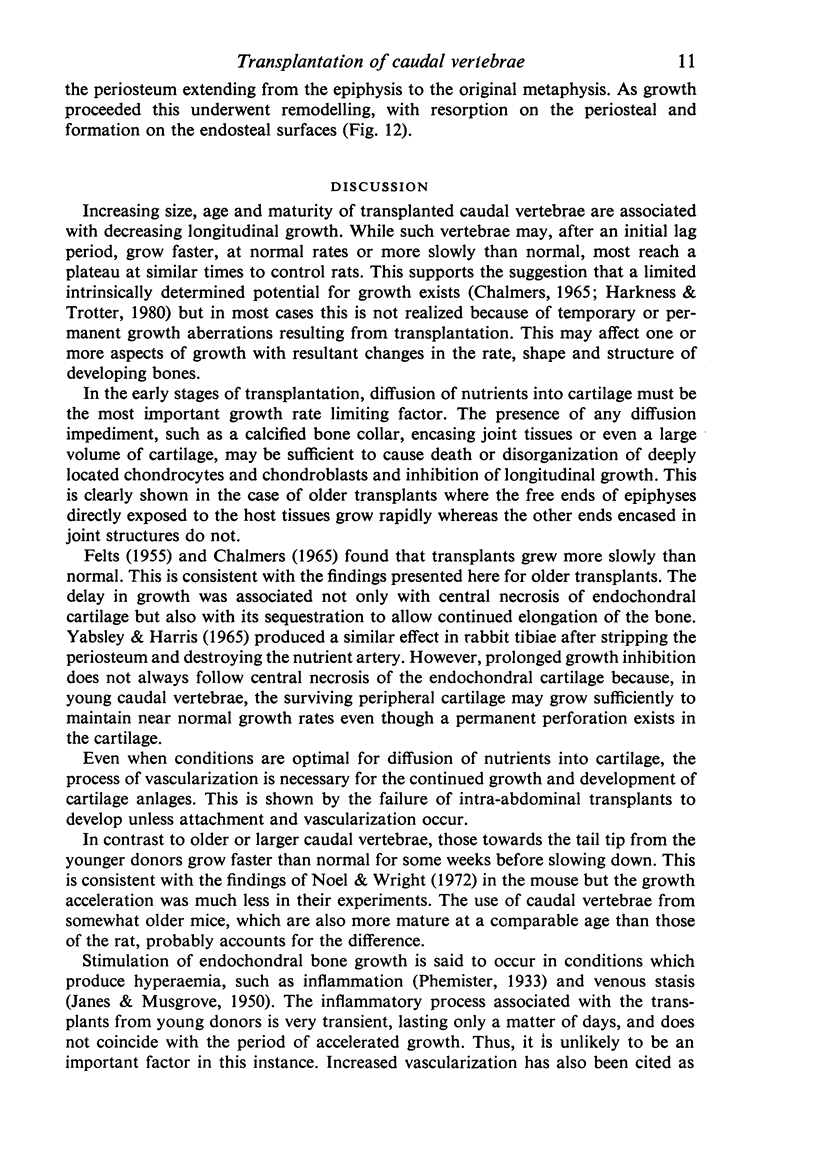
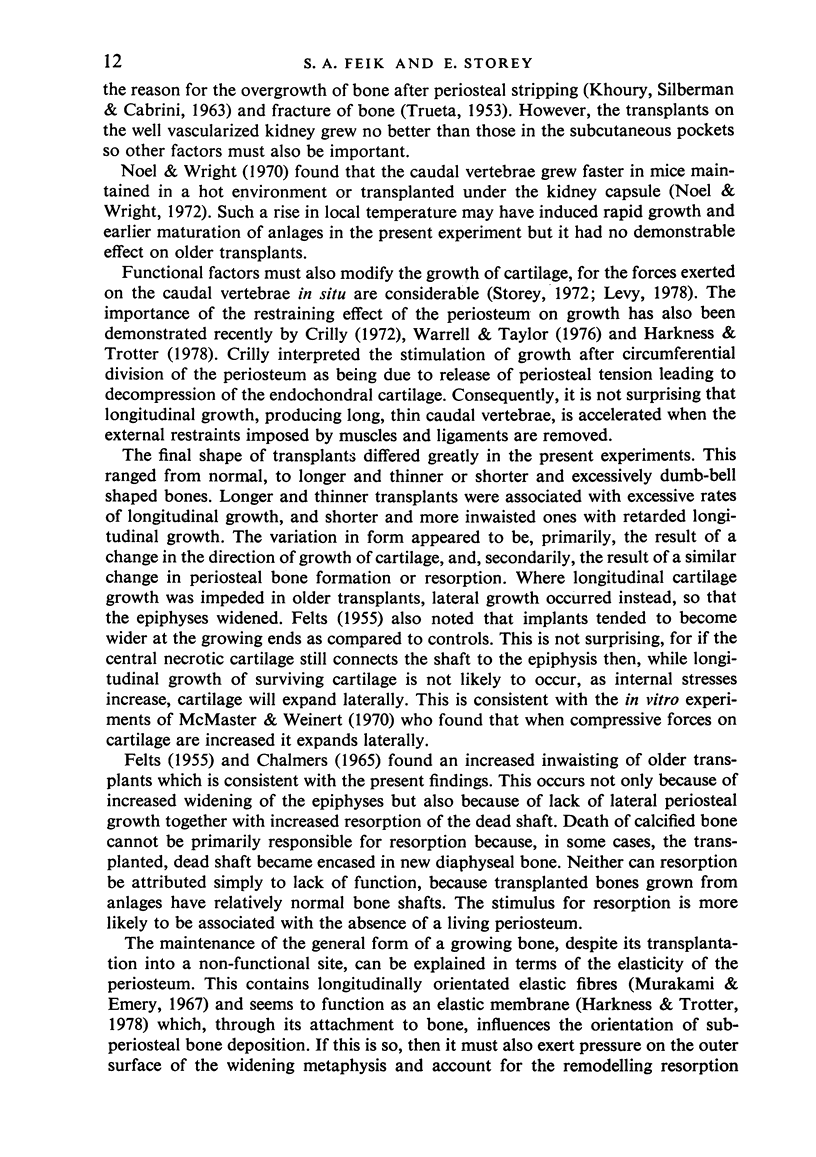
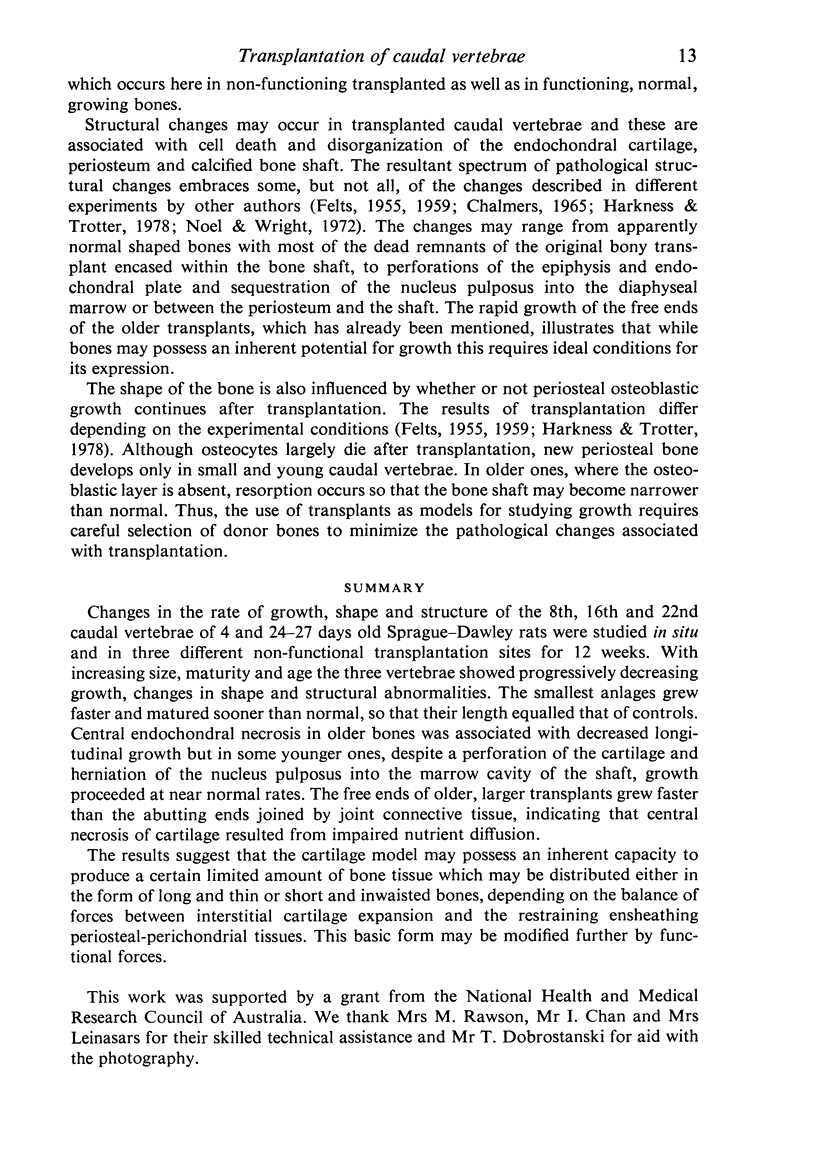

Images in this article
Selected References
These references are in PubMed. This may not be the complete list of references from this article.
- Crilly R. G. Longitudinal overgrowth of chicken radius. J Anat. 1972 May;112(Pt 1):11–18. [PMC free article] [PubMed] [Google Scholar]
- FELTS W. J. Transplantation studies of factors in skeletal organogenesis. I. The subcutaneously implanted immature long-bone of the rat and mouse. Am J Phys Anthropol. 1959 Sep;17:201–215. doi: 10.1002/ajpa.1330170306. [DOI] [PubMed] [Google Scholar]
- Feik S. A., Storey E. Joint changes in transplanted caudal vertebrae. Pathology. 1982 Apr;14(2):139–147. doi: 10.3109/00313028209061287. [DOI] [PubMed] [Google Scholar]
- Hammond R. H., Storey E. Measurement of growth and resorption of bone in rats fed meat diet. Calcif Tissue Res. 1970;4(4):291–304. doi: 10.1007/BF02279132. [DOI] [PubMed] [Google Scholar]
- Harkness E. M., Trotter W. D. Growth of transplants of rat humerus following circumferential division of the periosteum. J Anat. 1978 Jun;126(Pt 2):275–289. [PMC free article] [PubMed] [Google Scholar]
- Harkness E. M., Trotter W. D. Growth spurt in rat cranial bases transplanted into adult hosts. J Anat. 1980 Aug;131(Pt 1):39–56. [PMC free article] [PubMed] [Google Scholar]
- Huggins C. B., Anderson K. P. Growth of transplanted tails of infant rats in adolescent allogeneic recipients. Proc Natl Acad Sci U S A. 1976 Sep;73(9):3283–3287. doi: 10.1073/pnas.73.9.3283. [DOI] [PMC free article] [PubMed] [Google Scholar]
- JANES J. M., MUSGROVE J. E. Effect of arteriovenous fistula on growth of bone; an experimental study. Surg Clin North Am. 1950 Aug;30(4):1191–1200. doi: 10.1016/s0039-6109(16)33098-5. [DOI] [PubMed] [Google Scholar]
- Malcolm A. S. A lapping apparatus for hard tissue sections. Aust Dent J. 1975 Feb;20(1):32–36. doi: 10.1111/j.1834-7819.1975.tb03513.x. [DOI] [PubMed] [Google Scholar]
- Malcolm A. S. A microradiographic apparatus. Aust Dent J. 1972 Dec;17(6):454–460. doi: 10.1111/j.1834-7819.1972.tb04977.x. [DOI] [PubMed] [Google Scholar]
- McMaster J. H., Weinert C. R., Jr Effects of mechanical forces on growing cartilage. Clin Orthop Relat Res. 1970 Sep-Oct;72:308–314. [PubMed] [Google Scholar]
- Murakami H., Emery M. A. The role of elastic fibres in the periosteum in fracture healing in guinea pigs. I. Histological studies of the elastic fibres in the periosteum and the possible relationship between the osteogenic cells and the cells that form elastic fibres. Can J Surg. 1967 Jul;10(3):359–370. [PubMed] [Google Scholar]
- Noel J. F., Wright E. A. The effect of environmental temperature on the growth of vertebrae in the tail of the mouse. J Embryol Exp Morphol. 1970 Sep;24(2):405–410. [PubMed] [Google Scholar]
- Noel J. F., Wright E. A. The growth of transplanted mouse vertebrae: effects of transplantation under the renal capsule, and the relationship between the rate of growth of the transplant and the age of the host. J Embryol Exp Morphol. 1972 Dec;28(3):633–645. [PubMed] [Google Scholar]
- SOLA C. K., SILBERMAN F. S., CABRINI R. L. STIMULATION OF THE LONGITUDINAL GROWTH OF LONG BONES BY PERIOSTEAL STRIPPING. AN EXPERIMENTAL STUDY ON DOGS AND MONKEYS. J Bone Joint Surg Am. 1963 Dec;45:1679–1684. [PubMed] [Google Scholar]
- Storey E. Growth and remodeling of bone and bones. Am J Orthod. 1972 Aug;62(2):142–165. doi: 10.1016/0002-9416(72)90139-x. [DOI] [PubMed] [Google Scholar]
- TRUETA J. The influence of the blood supply in controlling bone growth. Bull Hosp Joint Dis. 1953 Oct;14(2):147–157. [PubMed] [Google Scholar]
- YABSLEY R. H., HARRIS W. R. THE EFFECT OF SHAFT FRACTURES AND PERIOSTEAL STRIPPING ON THE VASCULAR SUPPLY TO EPIPHYSEAL PLATES. J Bone Joint Surg Am. 1965 Apr;47:551–566. [PubMed] [Google Scholar]



